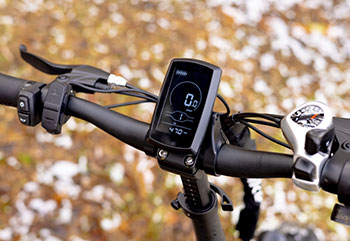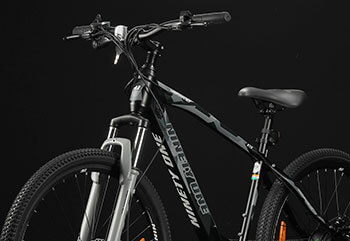Fixing a Bicycle Wheel

Did you ever ride your bicycle over potholes? Or hurriedly put in or remove your bike out from a stand? Have you ever had a collision or crash, even if minor? Or have you ever hopped on or off a pavement while on your bike? If you've answered yes to any of these questions, you risk having an untrue or out-of-true bicycle wheel.
A bicycle is considered out-of-true when they lose their perfect shape. You will notice that the rim gets deformed and pulls to the side that has more spoke tension. Let's understand the anatomy of a wheel, to understand its design and what it means to be untrue.
A bicycle wheel has four distinct parts. You have the rim, which is the largest part and is the circular frame. The center part of a wheel is the hub which houses the bearings and may also support the gears. And then you have the spokes, which are the wire support from the hub to the rim. The connectors of the spokes to the rim are called nipples.

The spoke-nipple combination is tightened so that each spoke has equal tension. By doing this - all these parts weighing just about a few kilos together can carry a heavy human easily. The essential aspect of this setting is 'equal tension'.An absence of 'equal tension' is when your wheel risks become untrue. We already mentioned a few events or situations that could possibly make a wheel untrue. But it's not every time you go over a pothole that your cycle wheel will become out-of-true.

Ways to identify an untrue wheel
1) The shape of the wheel is not the perfect round as it's meant to be.
2) You hear rattling sounds that emanate from loose or wobbly spokes. If you can rattle the spokes by hand, they are sagging. That means the strength of the wheel is compromised, and the chances of your spoke nipple disconnecting can be high.
3) When you spin your wheel off the ground, it wobbles back and forth.
4) In case you cycle over a rock or up the pavement, your wheel buckles slightly.
5) You can hear a rhythmic rubbing sound.
6) Your brakes are acting wonky.
If you notice any of these signs that we just mentioned, it means that you have an out-of-true wheel. And using your bicycle on an untrue wheel, you run the risk of multiple things occurring, which we have listed here below.

Effect of an out-of-true bicycle wheel
1) You will have diminished stopping power.
2) The strength and rigidity of your wheel will be decreased.
3) Chances of the bicycle taking a tumble increase.
Unfortunately, an untrue wheel does not true itself. It may only get worse. It has to be taken care of, or it has to get trued.
Truing is the process that involves tightening and loosening the spoke nipples to realign warped sections of the rim. It makes the rim nice and straight and creates a strong structure.

In case you're wondering, Can you true your own bicycle? - we say 'yes' and 'kind of'. So it's possible to true your bicycle wheels up to some level. For the rest, we say leave it to the professional. Of course, it's not impossible to true it yourself totally. All you need are the right set of tools and a bit of practice. You can get yourself an inexpensive wheel truing key or tool called a spoke wrench or spoke key. Make sure it fits the nipple size which is on your bicycle wheel. Watch a few videos to learn how to true a bicycle wheel. Remember when you tighten loose spokes on the bicycle wheel on one side of the rim, it should pull in that direction. Loosening has the opposite effect. Another vital aspect to note is to remember that even tension is what you should be aiming for. And not over-tighten one side and under-tighten another just to get the wheel into shape.

We hope that this information has been valuable to you. Having a trued wheel is essential for enjoyable and safe riding. Look out for the clues that we have mentioned, to check your wheel is aligned the way it should be.
Have you had an experience with an untrue wheel? If you have, share with us the effect and how you sorted it out by adding to the comments below.
- bicycle
- fixing
- wheel
Related Blogs

Cycling Adventures
Top 10 Cycling Events in India You Should Know AboutCycling has become an obsession in India, rather than just a mode of transportation. Cycling events have taken center stage in the country, since there is an increasing emphasis on fitness, adventure, and environmental awareness.

Electric Bicycle
A Novice's Guide To E-Bikes: Everything You Need To Know About Electric BicyclesElectric bicycles are creating waves amongst bicycle enthusiasts, but what is it that everyone is loving about them and why should you know all about them? Read here to know more.

Electric Bicycle
How To Maintain Your Electric Bicycle?While E-bikes are super convenient and easy to use, you have to make sure you maintain and take care of them from time-to-time. Here’s what an E-bike requires out of you.
